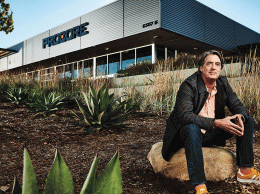Dako, a Danish company that makes cancer diagnostic tools and employs about 200 people in Carpinteria, has been purchased by Santa Clara-based Agilent Technologies in a $2.2 billion deal.
Dako has about 1,000 employees worldwide, is owned by private equity fund EQT and had revenue of about $340 million in 2010. The company makes a third of its products — stains and other substances that doctors use to diagnose cancer cells in tissue samples, along with some of the equipment to use the chemicals — in Carpinteria, which serves as its U.S. headquarters.
Agilent is much larger — $6.6 billion in revenue for its fiscal 2011 — and focuses on measurement equipment across a variety of industries such as life sciences, chemical analysis and electronics. The Dako deal is expected to close by mid-July.
While Agilent is in the measurement business in life sciences, it has not been in the business of diagnosing diseases. Officials at both companies described the transaction as a strategic deal designed to launch Agilent into diagnostics while giving Dako a partner with a powerful presence in Asia.
Officials at both companies said that the transaction is not expected to result in any job cuts in Carpinteria. “That’s not the plan here by any means — actually, it’s quite the contrary,” said Henrik Ancher-Jensen, corporate vice president of operations at Dako. “What we’re all planning on is, as we grow our revenue we’ll need more products. And as we make more products, we’ll need more people.”
Agilent spokeswoman Amy Flores said that Dako will remain an independent business within Agilent, with its leaders reporting to Agilent CEO Bill Sullivan. Dako will retain its name, with the added tagline “an Agilent Technologies company,” she said in an email.
“There is no plan to eliminate jobs, as Agilent’s strategy is to grow the business and create revenue growth, and we will need the talent Dako brings in order to maximize our success,” Flores said. “We don’t expect to see many other changes for Dako employees and have no plan to close Dako facilities.”
Dako’s Carpinteria facility is its lead site for special stains. Those are substances known as reagents that a doctor can use on a tissue sample to help discern whether cancer cells are present and whether treatment is called for. “The better we are at that, the better treatment can be given to the patient,” Ancher-Jensen said.
Agilent’s leaders “are buying themselves into a field where they have very limited knowledge today. Dako would be the fourth leg they would be standing on. The intention is to grow the diagnostic market we represent as much as possible without compromising the quality of the products,” Ancher-Jensen said. “From a Dako perspective, it’s a near perfect fit because we will be able to come in and utilize the very big presence that Agilent has in Asia. We’re new to those markets.”
Although many corporate mergers result in management buyouts, that’s not expected to be the case at Dako. “Our field of business and our field of expertise with in vitro diagnostics is so different from what Agilent does today that it’s needed,” Ancher-Jense said.
Ancher-Jensen said Dako staff responded positively to the news of the acquisition when Agilent’s top brass visited the Carpinteria facility shortly after the deal was announced. “They spent an entire day here with the staff and got site visits,” Ancher-Jensen said. “At a point in [Agilent CEO] Bill’s presentation, there was spontaneous standing applause. I was moved that all the employees felt so comfortable that this was the right thing to do.”






 Print
Print Email
Email
















